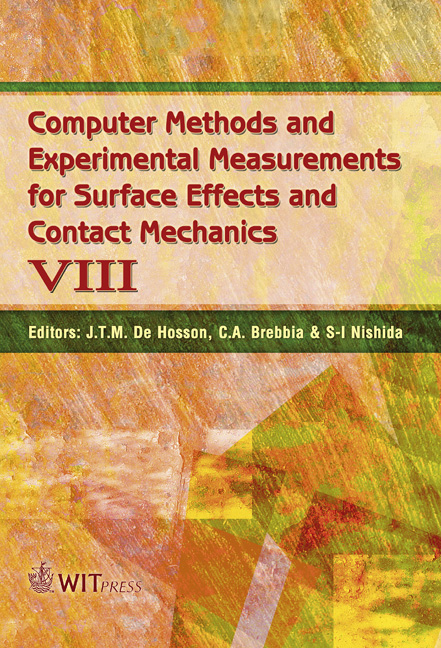Features Of Fretting Fatigue Strength/life And Its Mechanical Considerations
Price
Free (open access)
Transaction
Volume
55
Pages
10
Published
2007
Size
1,949 kb
Paper DOI
10.2495/SECM070271
Copyright
WIT Press
Author(s)
T. Hattori, M. Yamashita & N. Nishimura
Abstract
The fretting fatigue process has many features such as early stage crack initiation at the contact edge, very slow crack propagation and fatigue failure after a very long life operation. In a previous paper we presented a new fretting fatigue model which can explain these fretting fatigue features reasonably. In this paper we try to explain many other fretting features such as fretting fatigue strength and life dependence on contact pressure and contact edge shapes. Firstly we try to discuss the dependence of fretting fatigue strength/life on contact pressure. In accordance with the increase of the contact pressure the stress concentration at the contact edge increased and crack initiation stress level decreased. But to open these small cracks initiated at contact edges more wear or more load cycles are needed. So fretting fatigue strength limit decreased in accordance with the increase of contact pressure and fretting fatigue life increased in accordance with the increase of contact pressure. Then we discuss the fretting fatigue strength dependence on the contact edge shape, such as stress release projection or interference of the contact edge with the stress concentration fillet. Experimental results of fretting fatigue strength improvement with stress release projection can be explained analytically. The two-stage S-N curve can be shown in joint structures, in which contact edge is set near the stress concentration fillet. These features can also be explained analytically in this paper. Keywords: fretting fatigue, fretting wear, contact pressure, contact edge shape, stress singularity parameter, stress intensity factors.
Keywords
fretting fatigue, fretting wear, contact pressure, contact edge shape, stress singularity parameter, stress intensity factors.





